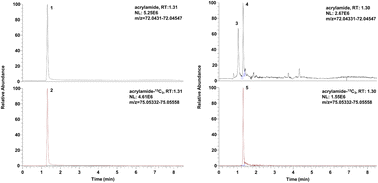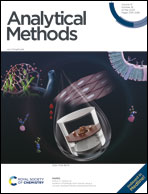General method for detecting acrylamide in foods and comprehensive survey of acrylamide in foods sold in Southeast China
Abstract
This study aimed to investigate the distribution of acrylamide (AA) in food by developing a universal method for detecting AA in various foods and analyzing the levels of AA in 437 food samples collected from Southeast China. The developed method was simple, rapid, and widely applicable, with an average recovery rate range of 81.7–94.2% and a relative standard deviation range of 1.7–8.2%. The limit of detection (LOD, 2.0–3.4 µg kg−1) and limit of quantitation (LOQ, 6.0–10 µg kg−1) were also determined. AA was detected in all types of food, with a total detection rate of 76%, and the levels ranged from LOQ to 6020 µg kg−1. Potato chips had the highest level of AA (mean value of 504 µg kg−1), whereas pastries had the lowest level (mean value < 6.0 µg kg−1). Kruskal–Wallis analysis revealed significant differences in AA levels among different foods (H = 229.8, p < 0.05). The AA safety limit intake recommendations suggested that the intake of high-AA foods should be strictly controlled to reduce the risk of potential carcinogenic effects. The developed method provides a useful tool for monitoring AA levels in food.



 Please wait while we load your content...
Please wait while we load your content...